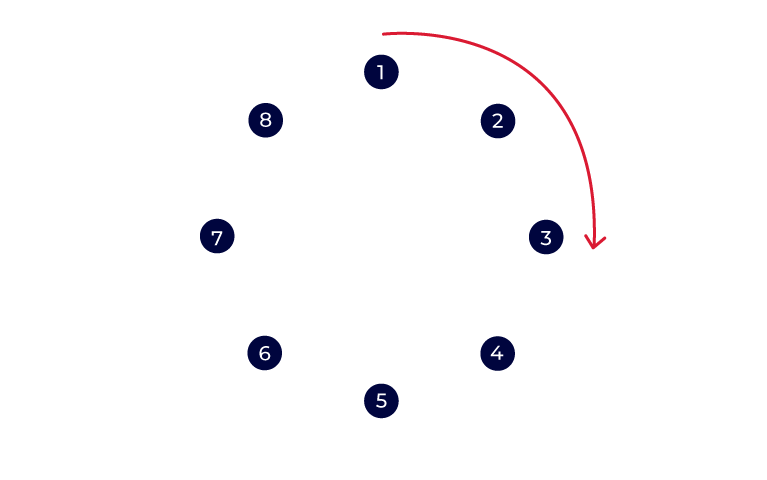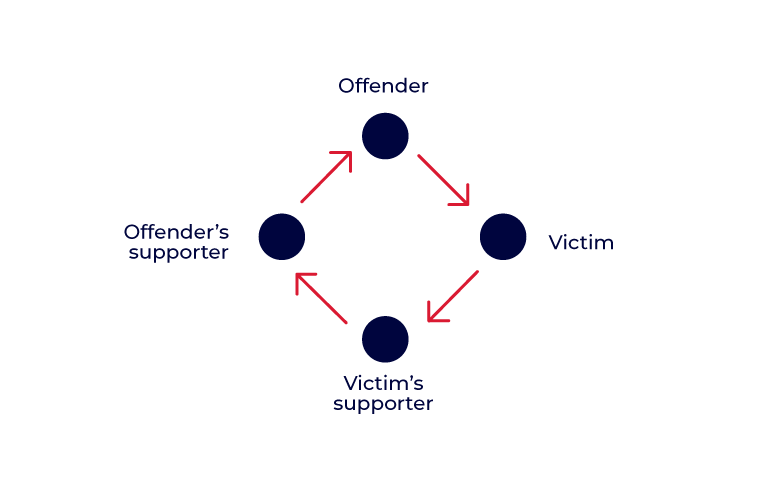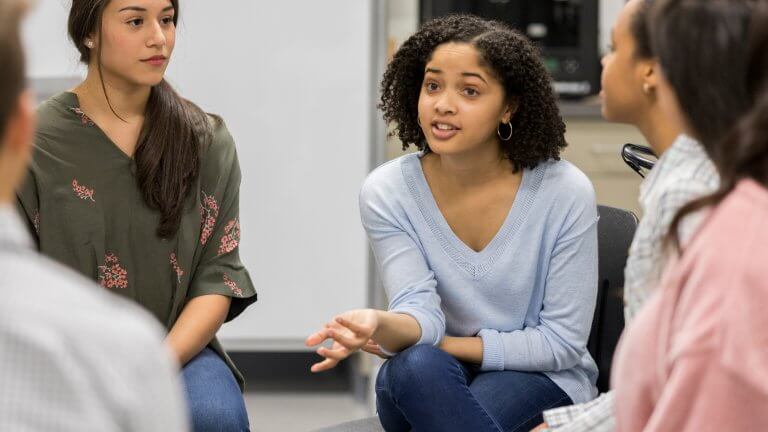Restorative circles are restorative discipline strategies you can use in your classrooms to develop relationships, build communities, and respond to conflicts and problems that arise. With restorative circles, you give everyone an equal opportunity to speak, and be listened to.
When you’re building your restorative circles, the basic structure is easy to learn. Gather everyone around in a circle, and follow the guidelines of whatever circle type you’re using!
You always keep two things the same across restorative circle types.
One, only let your participants speak one at a time. Don’t allow interruptions while others are talking. By doing this, you encourage everyone to listen while giving each of them an equal chance to respond.
Two, don’t pass judgement, but seek to understand problems. Your circle’s goal isn’t to pass judgement and define punishment. Instead, challenge those involved to understand why the conflict happened, and how it affected others.
Here are three types of restorative circles you can use in your classroom
- Sequential Restorative Circles
- Real Justice Conference
- Fishbowl Restorative Conference
1. Sequential Restorative Circles:

In sequential restorative circles, one person speaks at a time. The chance to speak moves around your circle in one direction.
Structure your sequential restorative circles around topics or questions raised by your circle facilitator. This format gives quite or reserved voices, who often get pressured by loud or assertive voices, a chance to speak freely. By using topics and questions, you also help guide your circle, and give your participants a more structured way of voicing their concerns.
When using a restorative circle, you’ll often rely on the help of a circle facilitator. Your job as a circle facilitator is to help guide your circle, but not lead it. You don’t determine who is right or wrong. Instead, you keep everyone on track, making sure they all have an equal chance to speak.
You don’t need a leader to run a successful restorative circle though. Often you can simply trust your participants to go around, as many times as you need, keeping order yourselves.
2. Real Justice Circles:

Another type of restorative circles you can use is known as a Real Justice Circles. When using real justice conferences, your order of speaking is different and more structured.
Your participants still sit in a circle, and discussion is still lead by a circle facilitator. However, your order of speaking is not sequential. Instead, follow a specific speaking order that’s defined by your conference script. The general format most people use goes: offender, victim, victim’s supporter, and offender’s supporter. As a circle facilitator, ask each person a set of restorative questions and listen to their response.
Once everyone has responded to the restorative questions, transition into a more open model of discussion. During this time, you can discuss what the victim needs and how those needs can be met. Once you’re at this point, the previous order is broken down. Everyone is allowed to talk in a non-ordered discussion, while still following the original guidelines.
3. Fishbowl Restorative Circles:

An additional restorative circle format you can use is the fishbowl. Fishbowl circles are drastically different than other restorative circles.
First, create an inner circle of active participants using either a sequential approach or a non-sequential activity. Outside the inner circle place your observers, each arranged in as many concentric circles as are needed to accommodate the group.
You can use fishbowl circles when you might have a large number of active participants but it would be impractical to have them all involved. Observers watch the circle activity and occasionally comment on it, but aren’t active members of the circle.
To create a slight variation on this, place an empty chair in the middle of the room. Have your outside observers sit in the chair, one at a time, say something, and then return to the outer circle. This helps you maintain a limited amount of participation by observers.
Restorative Circles are valuable tools for developing relationships and building classroom communities because they give each participant an equal opportunity to speak and be heard. Unlike traditional discipline models, they also allow individuals to understand how their actions impacted others. By not responding with just punishment, and instead listening to the stories, experiences, feelings, and thoughts of others, you get a deeper understanding of why something might have happened.
Angela has 24 years of experience in education. She has been in her current position for 12 years. Angela has trained and provided coaching support to over 200 campuses for PBIS. She is also a certified Restorative Practices coordinator. She is a trainer for Interventions, Coaching Classroom Management, CHAMPS, and Why Try.






Thank you for this. I recently did a short course on Restorative Practice but found that it gave a lot of information that gave an overview but still left me with little to put it into practice.
am a Chaplain in a Primary School and am wanting to use Circles (unfortunately this is not a whole-of-school practice). Can you recommend a very good book detailing how to use Circles for Primary School students?
Hey Vaughan,
Our Behavior team program manager, Angela Isenberg recommended this book when I passed on the question to her:
http://www.ascd.org/Publications/Books/Overview/Better-Than-Carrots-or-Sticks.aspx
She also mentioned another article that might be useful for you:
https://blog.esc13.net/wp-content/uploads/2019/12/Teaching-Restorative-Practices-in-the-Classroom-7-lesson-Curriculum.pdf
If you’ve got any other questions about the restorative process and using circles, feel free to reach out to her at angela.isenberg@esc13.txed.net!